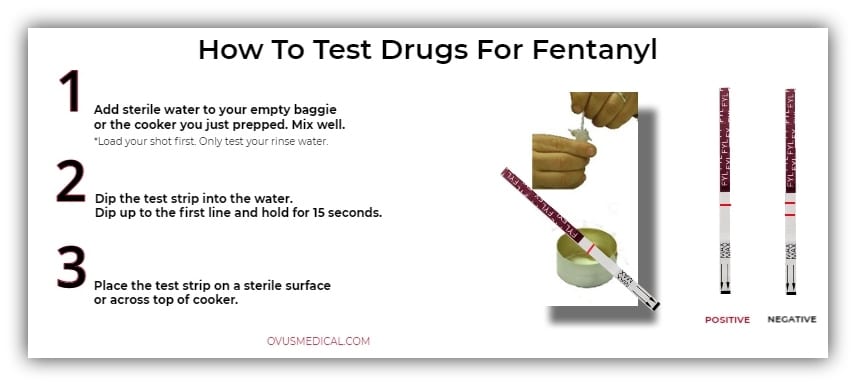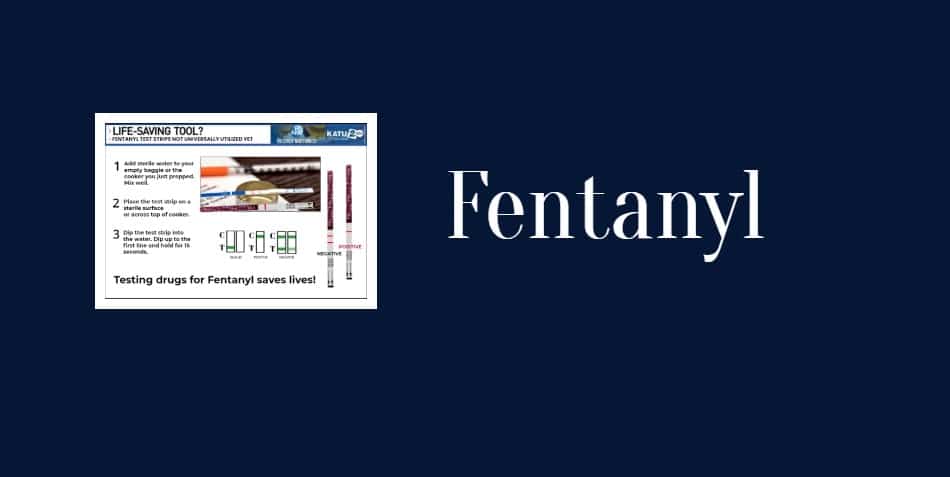Nearly every American knows someone who has lost their life or the life of a loved one to an opioid overdose. Unfortunately, deaths from synthetic opioids like fentanyl have skyrocketed in the past decade, taking 12 times as many lives in 2019 than in 2013. Fentanyl is particularly dangerous because it is extremely potent and added to many different drugs without the user’s knowledge. This means many of its victims never intended on taking it in the first place.
Therefore, people who use illegal drugs must know the risks. This article will explain what fentanyl is and what happens with a fentanyl overdose. Most importantly, you will learn how to prevent it from happening by testing your drugs with fentanyl test strips that are available for free at your local health department.
What is fentanyl?
Fentanyl is an opioid painkiller that is usually prescribed for severe pain after surgery. It works like heroin, oxycodone, and other painkiller medication. The critical difference is that fentanyl is one of the most potent opioids ever made. It is up to 100 times stronger than morphine and 50 times more powerful than heroin. It’s so strong that even a minuscule amount can kill you, as shown in the picture below.

What drugs are cut with fentanyl?
While some people actively seek out fentanyl, many people who lose their lives to it never knew they took it. This is because fentanyl is being put into other drugs. Other opioids have added to cut corners and make more money.
For example, a manufacturer can cut cheap heroin with a small amount of to trick their customers into thinking the heroin is highly pure. isn’t just being mixed with other opioids; however, even stimulants like cocaine have been laced with deadly results.
What is a fentanyl overdose like?
The signs and symptoms of a overdose are similar to other opioids. A person overdosing on may vomit or act dizzy and disoriented before quickly passing out and going limp. They may make gurgling sounds or foam at the mouth, and their breathing will slow down or stop. Another telltale sign of a overdose are pupils that have contracted down to pinpoints. Finally, their lips and fingernails will turn blue, and their skin will be cold and clammy to the touch.
What happens to your body when overdosing on fentanyl?
Fentanyl acts on the same parts of the brain as other opioids, but far more intensely. Opioids slow down the part of the brain that controls automatic breathing. When someone takes too much fentanyl, they pass out, but their breathing is suppressed. This starves their brain and other organs of oxygen. Other opioids also cause blood pressure to drop, making getting blood to the brain even more difficult. The brain is very sensitive to oxygen loss. Even a few minutes without it can cause death or life-long severe disability.
People experiencing a overdose are unconscious long before they die, so it isn’t clear if death by fentanyl overdose is painful. However, what is known is that waking up after being saved by Narcan is followed by the pain, nausea, and psychological symptoms of withdrawal. Regardless, any withdrawal symptoms from Narcan are temporary.
How can I save someone from a fentanyl overdose?
The drug naloxone, also called Narcan, can rescue someone from a fentanyl overdose, just like with other opiate drugs. However, since it is so potent, it usually takes two or more doses of Narcan to stop a fentanyl overdose. This is why it’s essential to have more than one dose of Narcan around if you use illegal drugs.
How can I avoid overdosing on fentanyl?
The best way to avoid unintentional fentanyl overdose is to abstain from illegal drugs. However, if you use drugs frequently, testing your drugs using a fentanyl urine test strip can greatly reduce your chances of accidental overdose.
How do I use fentanyl test strips?
Using a fentanyl test strip is easy. First, add ¼ inch of water to a container containing residue of the drug you’re testing. This can be the baggie the drug came in or the cooker you prepped it in. Swirl the water around to make sure it is mixed thoroughly. Next, grab the test strip by the solid blue end, and dip the other side into the water for 15 seconds. Let the strip sit for 5 minutes.
If a single line appears on the strip, your drugs are contaminated with fentanyl. Now, if two lines appear, then there is no fentanyl present. But if no lines show up, then the test didn’t work, and you should try again with a new strip.
How long does fentanyl stay in your system?
Fentanyl and its metabolites, the chemicals made when broken down in your body, are detectable for 2-4 days after use. If you think that you may have recently used a drug that was contaminated by fentanyl, you can find out by using a fentanyl urine test kit.

What should I do if my drugs contain fentanyl?
If you find out your drugs are laced with fentanyl, there may be resources in your area to safely and discreetly dispose of them without legal consequences. However, do not flush any drugs containing fentanyl down the toilet or the drain, as municipal water filtration systems are not equipped to deal with hazardous chemical waste.
If it is safe to do so, you should let your dealer know that your drugs were contaminated. While some dealers directly cut their drugs with fentanyl, contamination often is done by the dealer’s supplier. Letting them know can help save their life and the lives of their other customers.
Where can I get fentanyl testing supplies?
You can get free fentanyl testing strips at your local health department. You do not have to provide a reason for wanting the strips, and you will not have to provide identification to get it. At no point will law enforcement be notified. You can also purchase fentanyl testing strips here. Ovus Medical offers fast, safe and reliable fentanyl testing strips.
Addiction is a serious medical condition and your health department has resources to help guide you to recovery. In the meantime, harm reduction is essential. Luckily, testing your drugs using fentanyl test strips is an effective way to greatly reduce your chances of accidental overdose.
Purchase Fentanyl Test StripsReferences:
Prevention CfDCa. | CDC’s Response to the Opioid Overdose Epidemic. Centers for Disease Control and Prevention, National Center for Injury Prevention and Control
https://www.cdc.gov/opioids/basics/fentanyl.html. Published 2021. Updated February 16, 2021. Accessed August 11th, 2021.
- Han Y, Yan W, Zheng Y, Khan MZ, Yuan K, Lu L. The rising crisis of illicit use, overdose, and potential therapeutic strategies. Transl Psychiatry. 2019;9(1):282.
- Pereira J, Lawlor P, Vigano A, Dorgan M, Bruera E. Equianalgesic dose ratios for opioids. a critical review and proposals for long-term dosing. J Pain Symptom Manage. 2001;22(2):672-687.
- Administration DE. 2019 National Drug Threat Assessment. Drug Enforcement Administration Strategic Intelligence Section, U.S. Department of Justice. https://www.dea.gov/sites/default/files/2020-01/2019-NDTA-final-01-14-2020_Low_Web-DIR-007-20_2019.pdf. Published 2019. Accessed 2021, August 11th.
- Schiller EY, Goyal A, Mechanic OJ. Opioid Overdose. In: StatPearls. Treasure Island (FL)2021.
- Somerville NJ, O’Donnell J, Gladden RM, et al. Characteristics of Overdose – Massachusetts, 2014-2016. MMWR Morb Mortal Wkly Rep. 2017;66(14):382-386.
- Jordan MR, Morrisonponce D. Naloxone. In: StatPearls. Treasure Island (FL)2021.
- Silverstein JH, Rieders MF, McMullin M, Schulman S, Zahl K. An analysis of the duration of fentanyl and its metabolites in urine and saliva. Anesth Analg. 1993;76(3):618-621.
